Text
#i mean broadly i agree about the beauty thing but the thing is#the plants and their dry stalks & seed heads and duff collection ARE beautiful#they catch the snow and the winter light in a very soft and soothing way#CERTAINLY more beautiful than that soul-crushing lawn he showed
39K notes
·
View notes
Text
Happy spring! It's 2 if not more like 3 weeks early in my area

Today I learned new shiel fern fronds start out fuzzy in a kind of straggly way, like baby bird down.
(I was so worried this fern was dying bc its leaves were drying out at a seemingly unstoppable rate but nope, it was just using its energy for new leaves)
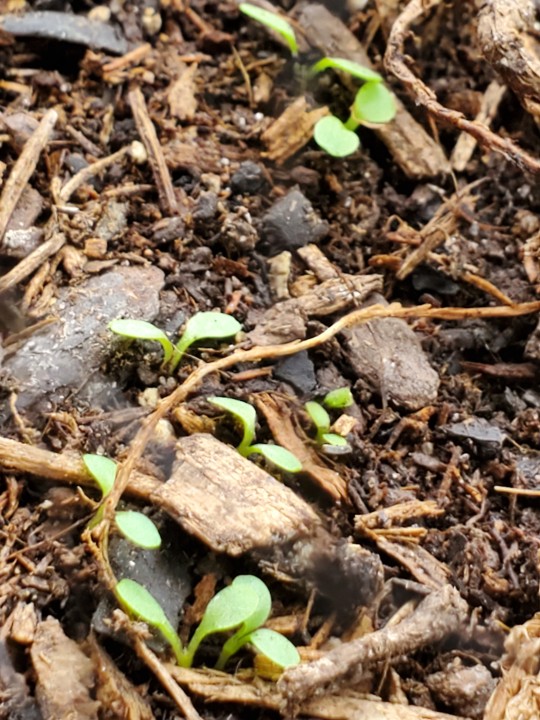
I also have a ton of tiny sprouts growing where my black eyed susan had been--I hope these are seedlings from parent plant but it's of course too early to tell
#spring on the porch#marginal shield fern#dryopteris marginalis#mystery seedlings of possibly rudbeckia
0 notes
Text
Spring sprouts! We're due for frost or near-frost later this week, and it might be the last one so I'm getting these babies ready for planting:

Spiderwort sprouts with sand coreopsis in the background. These are by far the most mature of my seedlings
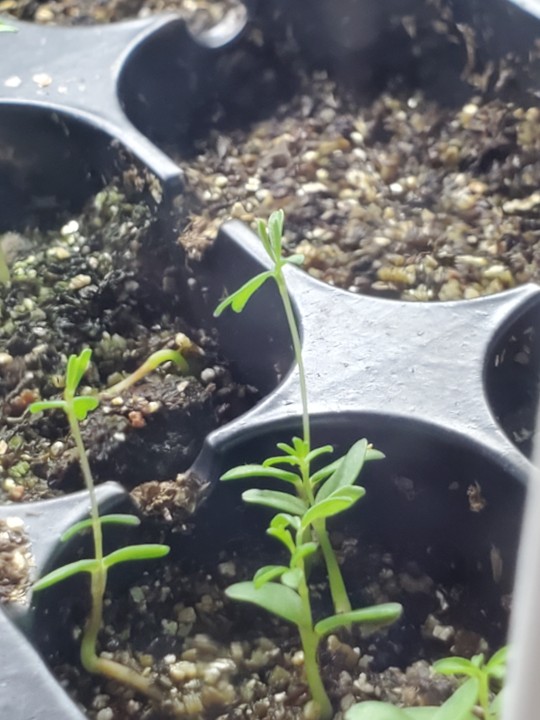

Prairie clover & a variety of bee balms, which I planted only a few weeks ago--they did indeed germinate as easily as promised and are growing crazy fast
#not to brag but i mixed my own fertilizer for the spiderworts and they seem to be thriving#ohio spiderwort#tradescantia ohiensis#sand coreopsis#coreopsis lanceolata#prairie clover#dalea purpurea#dotted bee balm#monarda punctata#wild bergamot#aka regular bee balm#monarda fistulosa#midwest native plants#native plants
0 notes
Text
Spring sprouts! We're due for frost or near-frost later this week, and it might be the last one so I'm getting these babies ready for planting:
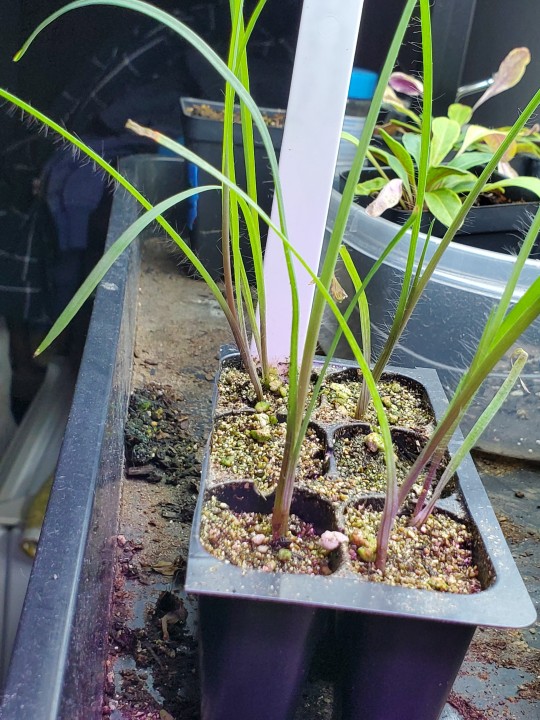
Spiderwort sprouts with sand coreopsis in the background. These are by far the most mature of my seedlings


Prairie clover & a variety of bee balms, which I planted only a few weeks ago--they did indeed germinate as easily as promised and are growing crazy fast
#not to brag but i mixed my own fertilizer for the spiderworts and they seem to be thriving#ohio spiderwort#tradescantia ohiensis#sand coreopsis#coreopsis lanceolata#prairie clover#dalea purpurea#dotted bee balm#monarda punctata#wild bergamot#aka regular bee balm#monarda fistulosa#midwest native plants#native plants
1 note
·
View note
Text

#thank you foxbright that was the most helpful definition of an A-profile I've encountered#rip dave brandt#no till farming#god i wanna do this in the inlaw's lawn so bad but they're in the middle of squaresville usa
125K notes
·
View notes
Text
As relentless rains pounded LA, the city’s “sponge” infrastructure helped gather 8.6 billion gallons of water—enough to sustain over 100,000 households for a year.
Earlier this month, the future fell on Los Angeles. A long band of moisture in the sky, known as an atmospheric river, dumped 9 inches of rain on the city over three days—over half of what the city typically gets in a year. It’s the kind of extreme rainfall that’ll get ever more extreme as the planet warms.
The city’s water managers, though, were ready and waiting. Like other urban areas around the world, in recent years LA has been transforming into a “sponge city,” replacing impermeable surfaces, like concrete, with permeable ones, like dirt and plants. It has also built out “spreading grounds,” where water accumulates and soaks into the earth.
With traditional dams and all that newfangled spongy infrastructure, between February 4 and 7 the metropolis captured 8.6 billion gallons of stormwater, enough to provide water to 106,000 households for a year. For the rainy season in total, LA has accumulated 14.7 billion gallons.
Long reliant on snowmelt and river water piped in from afar, LA is on a quest to produce as much water as it can locally. “There's going to be a lot more rain and a lot less snow, which is going to alter the way we capture snowmelt and the aqueduct water,” says Art Castro, manager of watershed management at the Los Angeles Department of Water and Power. “Dams and spreading grounds are the workhorses of local stormwater capture for either flood protection or water supply.”
Centuries of urban-planning dogma dictates using gutters, sewers, and other infrastructure to funnel rainwater out of a metropolis as quickly as possible to prevent flooding. Given the increasingly catastrophic urban flooding seen around the world, though, that clearly isn’t working anymore, so now planners are finding clever ways to capture stormwater, treating it as an asset instead of a liability. “The problem of urban hydrology is caused by a thousand small cuts,” says Michael Kiparsky, director of the Wheeler Water Institute at UC Berkeley. “No one driveway or roof in and of itself causes massive alteration of the hydrologic cycle. But combine millions of them in one area and it does. Maybe we can solve that problem with a thousand Band-Aids.”
Or in this case, sponges. The trick to making a city more absorbent is to add more gardens and other green spaces that allow water to percolate into underlying aquifers—porous subterranean materials that can hold water—which a city can then draw from in times of need. Engineers are also greening up medians and roadside areas to soak up the water that’d normally rush off streets, into sewers, and eventually out to sea...
To exploit all that free water falling from the sky, the LADWP has carved out big patches of brown in the concrete jungle. Stormwater is piped into these spreading grounds and accumulates in dirt basins. That allows it to slowly soak into the underlying aquifer, which acts as a sort of natural underground tank that can hold 28 billion gallons of water.
During a storm, the city is also gathering water in dams, some of which it diverts into the spreading grounds. “After the storm comes by, and it's a bright sunny day, you’ll still see water being released into a channel and diverted into the spreading grounds,” says Castro. That way, water moves from a reservoir where it’s exposed to sunlight and evaporation, into an aquifer where it’s banked safely underground.
On a smaller scale, LADWP has been experimenting with turning parks into mini spreading grounds, diverting stormwater there to soak into subterranean cisterns or chambers. It’s also deploying green spaces along roadways, which have the additional benefit of mitigating flooding in a neighborhood: The less concrete and the more dirt and plants, the more the built environment can soak up stormwater like the actual environment naturally does.
As an added benefit, deploying more of these green spaces, along with urban gardens, improves the mental health of residents. Plants here also “sweat,” cooling the area and beating back the urban heat island effect—the tendency for concrete to absorb solar energy and slowly release it at night. By reducing summer temperatures, you improve the physical health of residents. “The more trees, the more shade, the less heat island effect,” says Castro. “Sometimes when it’s 90 degrees in the middle of summer, it could get up to 110 underneath a bus stop.”
LA’s far from alone in going spongy. Pittsburgh is also deploying more rain gardens, and where they absolutely must have a hard surface—sidewalks, parking lots, etc.—they’re using special concrete bricks that allow water to seep through. And a growing number of municipalities are scrutinizing properties and charging owners fees if they have excessive impermeable surfaces like pavement, thus incentivizing the switch to permeable surfaces like plots of native plants or urban gardens for producing more food locally.
So the old way of stormwater management isn’t just increasingly dangerous and ineffective as the planet warms and storms get more intense—it stands in the way of a more beautiful, less sweltering, more sustainable urban landscape. LA, of all places, is showing the world there’s a better way.
-via Wired, February 19, 2024
13K notes
·
View notes
Text
If you're in the US Midwest, these little bastards are invasive, so use up as many of em as you can
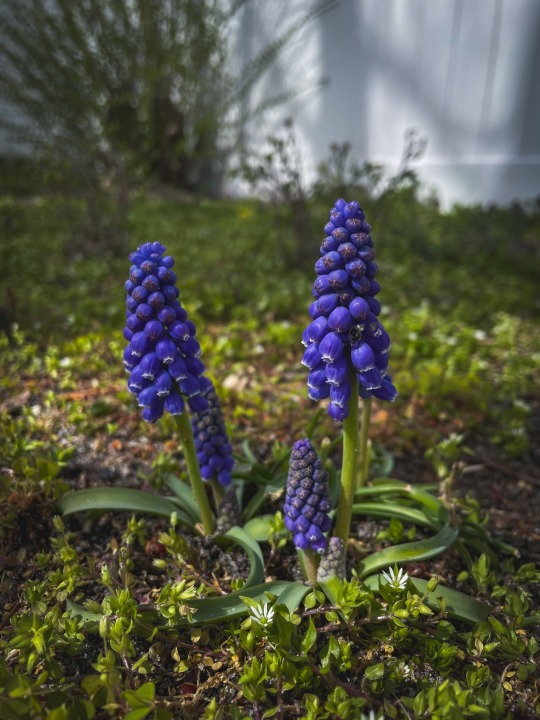
grape hyacinths are one of my favorite spring ephemerals. not only are they adorable, but the flowers can be used for making syrup that tastes faintly and sweetly of grapes.
and if that’s not your thing, they can also be used for making color-changing ink. the initial ink might look purple in color, but as it hits the paper and begins to dry it will turn blue. and if you add an acid, it will turn pink. and if you add a basic it will turn green (you can do this with the syrup, too!)
this happens because of naturally-occurring pigments called anthocyanins – the same pigments found in purple cabbage, violets, and blueberries!
COLOR SCIENCE 🧪
#they crowd out native species like wild geranium bloodroot etc#so use em up#midwest invasive species
2K notes
·
View notes
Text
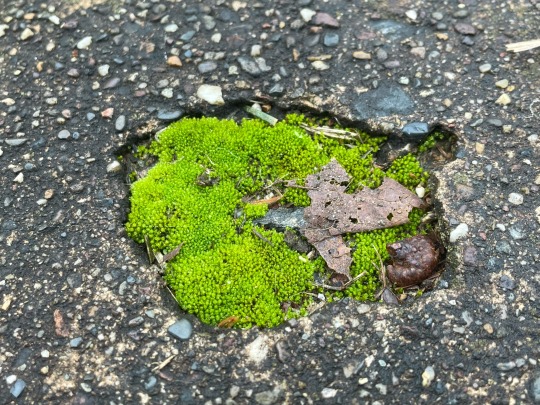
location: moss oasis, endless barren waste
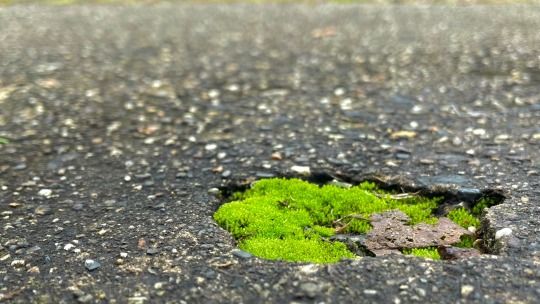
known for: moisture, spores, mite farming
29K notes
·
View notes
Text

I'm doing it gang, I've spent stupider gardening money before like when I dropped $300 on shade loving perennial bulbs only to learn they were also plants that rotted with wet feet and all immediately died in my swampy gumbo soil
I'm buying two firefly petunias. I've never grown petunias much because where I live they're a winter annual but fuck it I'll grow them as an indoor plant I certainly have the sun to do it.
They're supposed to ship to me in April, I'll report back on if they immidiately die or this is the coolest thing I own. My biochemical engineering design project was using a similar chemical pathway to modify bacteria to glow in the presence of specific toxins so I absolutely need glowing petunias in my window box
12K notes
·
View notes
Text
‘Despair is paralysis. It robs us of agency. It blinds us to put own power and the power of the earth. Environmental despair is a poison every bit as destructive as the methylated mercury in the bottom of Onondaga Lake. But how can we submit to despair while the land is saying “Help”?
Restoration is a powerful antidote to despair. Restoration offers concrete means by which humans can once again enter into positive, creative relationships with the more-than-human world, meeting responsibility that are simultaneously material and spiritual. It’s not enough to grieve. It’s not enough to just stop doing bad things.’
Robin Wall Kimmerer, Braiding Sweetgrass: Indigenous Wisdom, Scientific Knowledge and the Teachings of Plants
1K notes
·
View notes
Text
I made a magnolia tea latte so good I'm having a religious experience at my desk
this is a PSA to go steal some magnolia flowers from your neighbor's yard TODAY
#any moment now#the trees in my neighborhood are visibly sending out buds and they're gonna go off in like 2 days#the north american magnolias are already blooming here & they smell incredible
4K notes
·
View notes
Text
i think it's fucked up that there are plants that decided they wanted to eat meat
223K notes
·
View notes
Text
But seriously, when we got our property, it was all just…grass. A sterile grass moonscape, like a billion other yards. With two big old maple trees. Just grass and maples, that was it.
But then I got my grubby little paws on it, and I immediately stopped fertilizing, spraying, and bagging up grass clippings and leaves. I ripped up sod and put in flowers and vegetables. I put down nice thick blankets of mulch around the flowers and vegetables.
When I first was sweating my way through stripping sod, I saw a grand total of 1 worm and 0 ladybugs. The ground was compacted into something that would bend shovel blades.
Now, six years later, I can’t dig a planting hole without turning up fourteen earthworms, and there are so many ladybugs here. Not the invasive asian lady beetles; native ladybugs. They winter over in the mulch and in the brush pile. I see thousands of them.
The soil is soft and rich. There are birds that come to eat, and bees of many sorts.
Like this is something that you, yourself, can absolutely change. This is something that you, personally, can make a difference in.
#i'm moving in with family in a couple months and they have a hellscape like this#well. actually they have a couple actual trees so significantly better than this#but I'm still gonna try to replace as much lawn with real plants as i can
160K notes
·
View notes
Photo

no one asked but I’m telling you anyway
#the magnolias in my neighborhood are getting ready to go off at any moment & i'm so excited#gonna sample some magnolia petals this year
40K notes
·
View notes
Text
Photinus fireflies are probably one of North America’s most iconic and beloved beetles, and rightfully so. P. pyralis is big and bright, with a yellow-green color to its bioluminescence

I also often see these smaller Photinus with a warm orange glow. I think they could be P. scintillans, which aligns with their size, flash pattern, the yellow sclerites on males, and where I’m located. females of that species are short-winged and flightless, so I’ll try to find one to figure out the ID for sure.
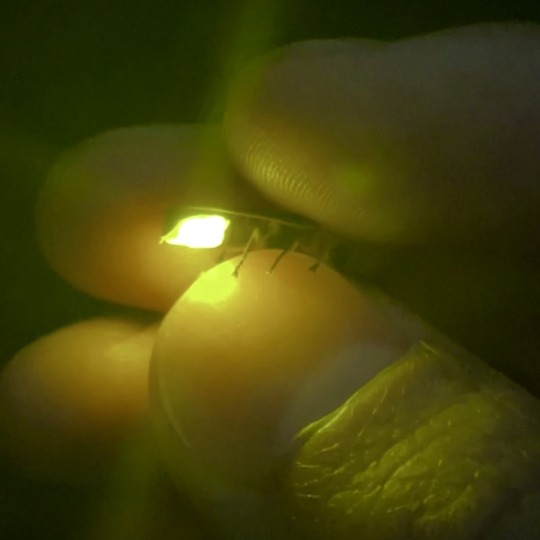

reminder that fireflies eat slugs and snails as larvae! if you like seeing them in your garden, stop trying to exterminate land gastropods and leave some vegetation where the adults can sleep during the day. slugs and “weeds” = more magic glowing bugs
10K notes
·
View notes
Text
Nrw plant babies


Fresh sprouts of Dalea purpurera (left) and Monarda punctata (right)
0 notes
